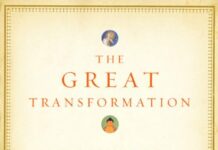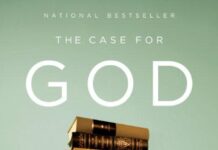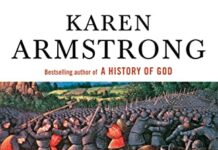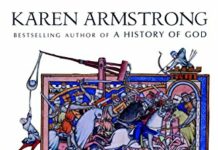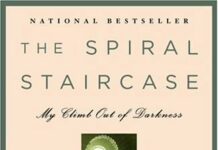
Ebook Info
- Published: 2005
- Number of pages: 159 pages
- Format: EPUB
- File Size: 0.19 MB
- Authors: Karen Armstrong
Description
This brilliant, readable synthesis of the history of mythology and the function it serves to humanity is the launch title of the groundbreaking publishing event, The Myths . “Human beings have always been mythmakers.” So begins Karen Armstrong’s concise yet compelling investigation into myth: what it is, how it has evolved, and why we still so desperately need it. She takes us from the Paleolithic period and the myths of the hunters right up to the “Great Western Transformation” of the last five hundred years and the discrediting of myth by science. The history of myth is the history of humanity, our stories and beliefs, our curiosity and attempts to understand the world, which link us to our ancestors and each other. Myths help us make sense of the universe. Heralding a major series of retellings of international myths by authors from around the world, Armstrong’s characteristically insightful and eloquent book serves as a brilliant and thought-provoking introduction to myth in the broadest sense — and explains why if we dismiss it, we do so at our peril.
User’s Reviews
Editorial Reviews: From Publishers Weekly This is an pedestrian study from the noted and popular religion scholar, in which Armstrong takes a historical approach to myth, tracing its evolution through a series of periods, from the Paleolithic to the postmyth Great Western Transformation. Each period developed myths reflecting its major concerns: images of hunting and the huntress dominated the myths of the Paleolithic, while the myths of Persephone and Demeter, Isis and Osiris developed in the agricultural Neolithic period. By the Axial Age (200 B.C. through A.D. 1500), myths became internalized, so that they no longer needed to be acted out. Reason, says Armstrong, largely supplanted myth in the Post-Axial Period, which she sees as a source of cultural and spiritual impoverishment; she even appears, simplistically, to attribute genocide to the loss of “the sense of sacredness” myth offers. Armstrong goes on to relate that in the 20th century, a number of writers, such as Eliot, Joyce, Mann and Rushdie, recovered the power of myth for contemporary culture. Although the book offers no new perspectives or information on the history of myth, it does provide a functional survey of mythology’s history. But a more engaging choice would be Kenneth Davis’s Don’t Know Much About Mythology (Reviews, Sept. 5). (Nov.) Copyright © Reed Business Information, a division of Reed Elsevier Inc. All rights reserved. From Booklist In this essay, superpopular religion historian Armstrong (Islam: A Short History, 2000) fastens the attributes of myth to the major chronological categories of human history. At each transition from the Paleolithic to scientific eras, she argues that a mythical conception of natural forces has drifted ever further from interpretation in pragmatic and logical terms, such that myth in modern times is a beleaguered species of fiction. To Armstrong this state reflects a profound misunderstanding of what myth is and does. Defining it as an art form that, on the assumption of the existence of an invisible realm of reality, protects one against the despair arising from the limitations of the tactile world (death in particular), Armstrong relates how mythology has historically been reformulated. She traces a theogony, illustrating it with examples from Chinese, Middle Eastern, Egyptian, and Greek cultures, as sky worship phased into anthropomorphic gods and then into ethical systems such as those of Confucius or Jesus. Written with great explanatory clarity, Armstrong’s review of mythology is an efficient, fascinating experience. Gilbert TaylorCopyright © American Library Association. All rights reserved From The Washington Post The most ballyhooed event at this year’s Frankfurt Book Fair was the launch of Canongate’s “The Myths,” retellings of classic myths by 100 internationally renowned writers, including Chinua Achebe, A.S. Byatt and Alexander McCall Smith, among many others. The first three books in the series — fictions by Margaret Atwood and Jeanette Winterson and an introductory volume by Karen Armstrong — have recently appeared in 28 languages from 33 publishers (there are five English language editions) in the biggest simultaneous publication ever.It’s difficult not to recast this achievement in pop-culture terms — Monster Mythology Smackdown! — and just as difficult not to add one’s own mythic subtext, that of David and Goliath. Canongate was established in 1973, a small Edinburgh publisher specializing in Scottish titles such as Escape From Loch Leven and Scottish Love Poems. Still, even in its early years, Canongate showed a taste for the offbeat, publishing the Glaswegian author Alasdair Gray and the first UK edition of Edward Abbey’s seminal The Monkey Wrench Gang. But by the early 1990s, the foundering house was in receivership.Enter Jamie Byng. The youngest son of the Earl of Stafford and the stepson of a former chairman of the BBC, Byng studied literature at Edinburgh University and worked as a publicist at Canongate when he was 24. In 1994, at the ripe old age of 26, he masterminded a buyout of the company. Byng has since transformed Canongate from the publisher of Traditional Scottish Dyes and How To Make Them into a powerhouse, 2003’s British Book Awards Publisher of the Year. He’s done this through a winning combination of prescience, irreverence and boldness. For instance, in 1998 he started releasing inexpensive paperbacks of the books of the Bible under the series title Pocket Canons, each introduced by a different author: Fay Weldon on Corinthians, Bono on the Psalms, Ruth Rendell on Romans and Will Self on Revelations.In 2002, Canongate published Michel Faber’s bestselling The Crimson Petal and the White; the previous year, Byng bought the British rights to Yann Martel’s Life Of Pi. Martel’s novel subsequently won the Man Booker Prize, cementing Byng’s reputation as a visionary maverick. It also, presumably, lined Canongate’s coffers so that Byng could begin publishing “The Myths.”Which brings us to the books themselves. These are novellas rather than full-blown novels, but Jeanette Winterson’s contribution in particular feels wispy, despite its title. Weight is a retelling of the myth of Atlas. As Winterson puts it in her introduction, “I have written this personal story in the First Person . . . and this leads to questions of autobiography. Autobiography is not important. Authenticity is important. The writer must fire herself through the text, be the molten stuff that welds together disparate elements. I believe there is always exposure, vulnerability, in the writing process, which is not to say it is either confessional or memoir. Simply, it is real.” Unfortunately, Weight doesn’t make good on this promise (or threat) of authorial alchemy. Despite narrative shifts from first- and third-person, and among Atlas, Heracles and the author, Weight is a fairly straightforward account of one of the 12 labors of Heracles. Atlas was “born one of the Titans, half man, half god, a giant of a giant race.”Punished by the Olympian gods for rebelling against them, he is sentenced to carry the Kosmos upon his back. Heracles has also fallen afoul of the gods, but through an accident of birth. He is Zeus’s son by a mortal woman, and has long suffered the enmity of Zeus’s wife, Hera. Hera first maddens Heracles so that he slays his own children, then helps engineer the Labors as atonement for his crime. His penultimate task is to obtain the Golden Apples from the Garden of the Hesperides (Atlas’s daughters), guarded by the hundred-headed serpent Ladon. Heracles offers to hold up the Kosmos while Atlas obtains the fruit for him. Atlas very sensibly decides to leave Heracles with the weight, but Heracles tricks Atlas into taking the world back onto his shoulders. It’s a poignant story — who doesn’t sympathize with Atlas, especially when he’s contrasted with the bullying, bragging Heracles? — but despite occasional glints of humor, Weight is a leaden retelling of it. Only in its last pages does Winterson’s book finally soar, when she introduces Atlas to Laika, the Russian dog sent into space in 1957. “Atlas had long ago ceased to feel the weight of the world he carried, but he felt the skin and bone of this little dog. Now he was carrying something he wanted to keep, and that changed everything.” In this brief, sweet sequence, we glimpse a new myth being born. “I want to tell the story again,” Winterson repeats at the end of Weight. Her account of Atlas and Laika made me wish she would. Margaret Atwood’s distaff take on The Odyssey — The Penelopiad — is more successful, if not terribly surprising. A feminist perspective on Homer from Margaret Atwood? We’re shocked. Penelope has for eons been the poster girl for feminine fidelity. Intelligent, yes, but also rather dull, and slightly maddening by 21st-century standards — she waited how long? For him? While he was sleeping with them? Atwood doesn’t exactly give her a makeover, but she gives her a voice, at once plaintive and wise, as well as a long view: Penelope narrates her tale from the “gloomy halls of Hades.” “Well, yes, it is dark, but there are advantages — for instance, if you see someone you’d rather not speak to you can always pretend you haven’t recognised them.” The events dovetail with those in The Odyssey; the narrative shifts are in emphasis more than execution. So we get Penelope’s curt commentary on her beautiful cousin Helen, as well as her clear-eyed assessment of marriage:”Marriages were for having children, and children were not toys and pets. Children were vehicles for passing things along. These things could be kingdoms, rich wedding gifts, stories, grudges, blood feuds. . . . To have a child was to set loose a force in the world.” We also see Penelope’s grief, well-salted with guilt, for the 12 serving maidens who were slain upon her husband’s return home. In The Odyssey, the maids are hanged by Telemachus, son of Odysseus and Penelope, for the crime of sleeping with the suitors who had taken up residence in Odysseus’s halls. Atwood makes them a loopily postmodern Greek chorus, with mixed results. Penelope’s story is strong stuff: Introducing chapters with titles such as “The Chorus Line: Kiddie Mourn, A Lament by the Maids” gives these sections the air of a failed Monty Python sketch. Finally, Karen Armstrong provides A Short History of Myth, an introductory volume to Canongate’s series. Armstrong is the bestselling author of A History of God, Islam: A Short History and Buddha, among other titles. Her essay here is serviceable. She relies heavily on the usual suspects — Mircea Eliade, Joseph Campbell, Walter Burkert — and has a lamentable tendency to make sweeping pronouncements that sound trite: “In the pre-modern world, mythology was indispensable. . . . It was an early form of psychology.” “People were becoming disillusioned with the old mythical vision that had nourished their ancestors.” “The Neanderthal graves show that when these early people became conscious of their mortality, they created some sort of counter-narrative that enabled them to come to terms with it.” Perhaps in future volumes Canongate could give equal time to scholars such as Jack Zipes and Marina Warner, and historians like Italy’s Carlo Ginzburg or South Africa’s David Lewis-Williams, whose work has more provocatively explored the boundaries and evolution of myths and storytelling. Still, these first three books are a tantalizing start to an ambitious project, with intriguing works to come: Israeli author David Grossman’s version of Samson, the Russian Victor Pelevin’s Theseus and the American Donna Tartt’s take on Daedalus and Icarus. All mythology is a work-in-progress. New myths are being born right now, and old ones reinvented, in decaying buildings, on laptop computers, in hushed rooms around the globe. Canongate is to be applauded for serving as midwife to some of them.Reviewed by Elizabeth Hand Copyright 2005, The Washington Post. All Rights Reserved. Read more
Reviews from Amazon users which were colected at the time this book was published on the website:
⭐I had looked around for a long time what was missing in my quest to go beyond reason. This book entails the step by step understanding of the need to have mythology in our lives. In the irony of life, it is the reason to fully understand the reason for our being.
⭐Magnificent, affecting, rivetingAtwood’s Odysseus is no hero. He’s a thug. A killer.Her Penelope is wily and elusive. But she could not save her 12 maids.
⭐There are really enough reviews. Two comments to justify the four stars:First the criticisms and comments below (above?): the greatest weakness in her book is that she offers her opinions and speculations as facts. They are not, they are something much higher. They are interpretations, often brilliant and well footnoted. The introduction left me cold and I disagree with some of the conclusions, especially in the last chapter. So what? We are different people. I agree that this should never be the only work you read about mythology. It might make a good introduction, if it is carefully explained that these are interpretations. Her failure to make this clear is a flaw.Second, much of the speculation is brilliant, well argued, as supported by examples. She explains the role and nature of myth provocatively, in the best sense of the word, from her first chapter on the earliest myths to her last, which ends with a meditation on art, particularly modern fiction as a modern parallel to mythology.Her writing is especially good and clear. Those who have found her writing too thick or two difficult should go back reading comic books.
⭐K Armstrong informs us about myth and why we believe what we believe now. A deep thinker of our time. Imagine if her punctilious writing were in our schools instead of dumbed down chrome(anti)books….
⭐The book is vital to your whole western culture because we have moved to reading of the scared books as fact instead of realizing that they serve us only if we understand it to be the myth that they are. It also vital for us to understand that they are a revelation of humanities desire to be better human being and therefore give us guidance on ways to become better. Very important reading for all of us.+
⭐In a swift 149 pages, Karen Armstrong covers a lot of ground. She communicates the importance of myth. She shows how myth has evolved through history, moving through different phases (the Paleolithic; the Neolithic; Early Civilization; the Axial Age; the Post-Axial Period; and, the Great Western Transformation [encompassing the scientific revolution leading to the enlightenment, modernism, and post-modernism]). In each of these periods, we get a strong sense of how mythology shaped the fabric of society, and how social, intellectual, political, and economic factors in turn shaped mythology. One of the strongest sections of the book is the final 15 pages, where Armstrong depicts modern society in tatters due to its inability to formulate a coherent myth. This is an excellent overview of the subject, one that I’ll return to.
⭐I have read several of Karen Armstrong’s books prior to this book.One of the reasons I choose this book was Ms Armstrong provides an abridged and simple understanding of a complicated subject. If you choose to buy this book I suggest you be well versed in religion versus myth. If you take any of the holy scriptures from a fundamentalist point of view you will not enjoy this book.However, if you are trying to understand where religion or spiritually is in reference to an understanding of the non caring “logos” world of today, this an excellent point of view.To me the book helped me better understand the holy scriptures of various religion, Karl Jung’s “Man and his Symbols”, and other authors such as Joseph Campbell.Redsoxpapa
⭐Karen Armstrong is a terrific writer & I consider her the best religious writer of our time. She never preaches. Not biased. Just tells the facts as written over the ages. I have read most of her books. The best, I think, was “The Great Transformation.” However I just finished reading “Fields of Blood-Religion and the History of Violence.” This is an excellent read, indispensable for those who seek the meaning behind the global politics we have today. I recommend all of Armstrong’s books to anyone interested in history, religion, politics, & the historical, religious figures of note. .
⭐There’s a potent argument underlying this book’s central thesis that myth helps us ‘to get beyond the chaotic flux of random events to a reality that embodies something else.’ That ‘something else’ isn’t pinned down too clearly at first, but seems to become fleshed out as the writer develops her thinking. One aspect of this proposes that linear and logical modes of thought ever since Newton have disbarred us from discovering our full humanity. Karen Armstrong diverts the stream of this idea into the writing of Conrad and Eliot towards the end and it’s cleverly worked, apparently tangential but actually central. Her explanation of Karl Jaspers is deft and accessible with much of interest in the evolution of mythical ideas through the Axial and Post-Axial Ages. Further, Armstrong’s succinct comment that ‘the myth of the hero was not intended to provide us with icons to admire, but was designed to tap into the vein of heroism within ourselves’ is an idea that novelists such as Madeline Miller take up in their work (my review of Miller’s ‘Circe’ follows this one). Excellent referencing at the end, easily accessible via the main text in this Kindle edition, reinforces the vital sense that this is indeed a ‘short history’ and that a great intellectual adventure is out there in the vast hinterland of anthropological and theological work already covered. Having a religious predisposition will help you enjoy this book but Dawkins disciples out there also, stay with it…you know it makes sense!
⭐For such a huge subject, it is a small text but only in size.Armstrong does try to paint on a broad canvas to deal with an aspect of humanity which is much overlooked. For as long as humans have been, myth has co-existed with them, an attempt to explain and control the world in which we live.i What is Myth?ii The Palaeolithic (2000 to 8000 BCE)iii The Neolithic Period (8000 to 4000 BCE)iv The Early Civilisations (4000 to 800 BCE)v The Axial Age (800 to 200 BCE)vi The Post-Axial Age (200 to 1500 BCE)v The Great Western Transformation (1500 to 2000 BCE)In a text of only 158 pages, it is obvious these eras are skimmed, looked at in their generalities rather than great depth. However, do not let that put off readers. As an introduction to an essential human experience, it is worth of a few hours’ reading, if only to skim a deep subject in its generalities before looking deeper. For anyone needing further reading, Robert GRAVES, “The White Goddess” (Faber and Faber, 1975, ISBN 978-0571069613, the 3rd revised edition) is a good option.
⭐This is a slender tome on a massive subject, so if you’re looking for someone to cover all the bases as regards the life of myth then forget it. If you’re looking for someone to give you a quick gallop through the evolution of mythology, some of its central preoccupations and some key starting points for a further exploration into the world of myth, then Armstrong is your woman. Written as the first and introductory tome for the Canongate Myths series, which invites well known authors to rewrite and refresh their favourite mythological stories, this is just as useful as a standalone, educational text, and doesn’t need to be read in conjunction with any of the books featured in the series, particularly as each author prefaces their work with the reasons behind why they wrote what they wrote. This is still a good book to have. It deals with the broad concepts of what drives and keeps myth alive rather than the debate over how to study or interpret it, which is fine, as there are hundreds of books out there by anthropologists and other students of myth, all with their own particular axe to grind. It is particularly refreshing here to find a reasonable, coherent argument that just is.
⭐This is one of the worst books I have ever read. I was hoping to be enlightened by learning about new myths from around the world or a new insight into the myths I might know already and for the astute author to draw interesting conlculsions from them – highlighting themes and offering a new perspective. Instead it rambles through history with almost no structure, little research or even description of the myths she is talking about. Don’t bother.
⭐After reading Philip Pullman, Jeanette Winterson and Ali Smith in the Canongate Myths series, I decided that I needed a broader perspective so I ordered Karen Armstrong’s general introduction. I was not disappointed. I watched Karen being interviewed by Joan Bakewell at Hay-on-Wye several years ago and was extremely impressed by them both. Karen is a lapsed Catholic who is as receptive to Hinduism, Buddhism and Jainism as she is to Judaism, Islam and Christianity. She is a professional academic who is as thoughtful and sensitive as any major poet or novelist. In short, she is a first-class theologian and mythologist and we are extremely lucky to have her.
Keywords
Free Download A Short History of Myth in EPUB format
A Short History of Myth EPUB Free Download
Download A Short History of Myth 2005 EPUB Free
A Short History of Myth 2005 EPUB Free Download
Download A Short History of Myth EPUB
Free Download Ebook A Short History of Myth
